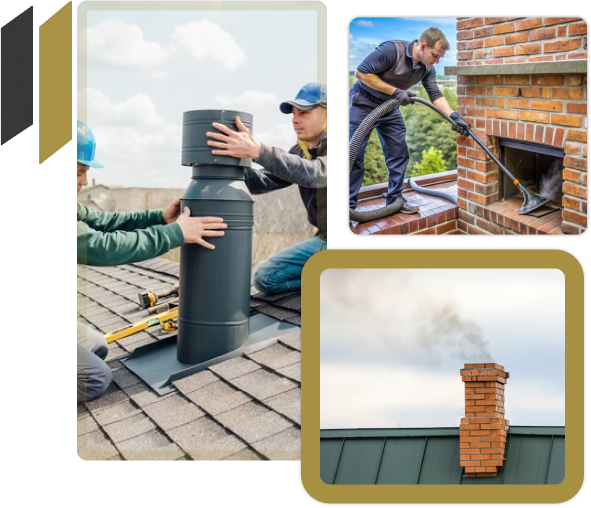
At Glasgow Fireplace Installers, we understand the importance of regular chimney maintenance to ensure your fireplace or stove operates safely and effectively. Our seasoned professionals provide thorough chimney cleaning services to prevent dangerous blockages, eliminate unpleasant odours, and keep your home warm and inviting.

Get in contact with us today to book
your Chimney Service
Here’s how we implement a thorough process to ensure your chimney is clean and well-maintained.
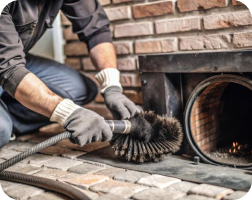
Initial Inspection
We assess for blockages, soot build-up, and any structural issues.
Preparation
Protecting your home with dust sheets, we set up specialised brushes and vacuums.
Chimney Sweeping
Using flexible rods and vacuums, we remove soot, creosote, and debris.

Post-Clean Inspection
A final check ensures everything is clear and safe.
Clean-up
We leave your home spotless and provide advice for future maintenance.

Prevent Chimney Fires
1
Improve Efficiency
2
Eliminate Odours
3

Prevent Blockages
Regular cleaning prevents blockages from birds’ nests, or other debris that can cause smoke to back up into your home.
4
Ensure Safety
Regular maintenance helps spot and address structural issues, ensuring safe operation of your fireplace or stove.
5
Meet Insurance Requirements
Some insurance policies require regular chimney inspections and cleanings to remain valid.
6
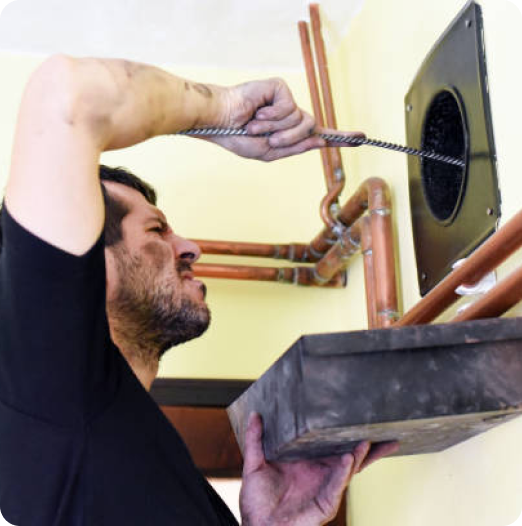
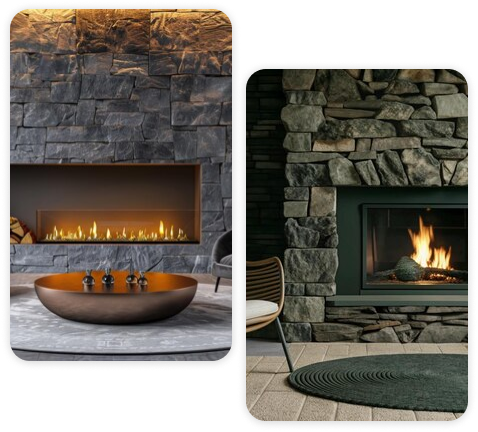

Need Help?
If you have any questions or need assistance with booking, please don t hesitate to reach out to our friendly team. We are here to help with everything from installing or updating chimney liners for wood burning or gas fireplaces to ensuring proper exhaust of fumes and smoke.
We look forward to helping you create a warm and inviting space with your new fireplace!
It is recommended to have your chimney cleaned at least once a year, ideally before the start of the heating season. This helps prevent dangerous creosote build-up and ensures safe operation of your fireplace.
Common signs include a build-up of soot, a noticeable smell coming from the chimney, poor fireplace performance, or visible creosote deposits. If you experience any of these issues, it’s time to schedule a cleaning.
Yes, even if you use your fireplace infrequently, it’s important to have your chimney cleaned annually. Creosote and soot can accumulate over time, posing a risk of chimney fires.
Our chimney cleaning service typically includes a thorough inspection, removal of soot and creosote build-up, and a final inspection to ensure everything is clean and functioning properly.
To prepare for a chimney cleaning, remove any items or furniture near the fireplace or chimney, and ensure easy access to the chimney. Our team will handle the rest, including protecting your home from any dust or debris.
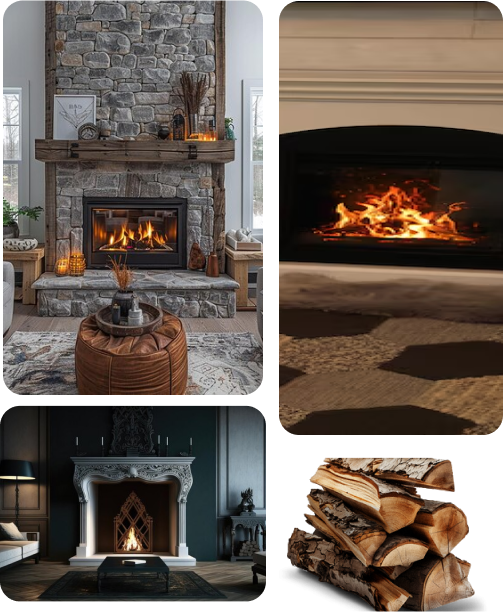

Drop a line
Mail Us
24/7 Service
Call Us
Location
Visit Us
58 Eastwood mains Road, Glasgow, G46 6QD
Company
Support
Monday to Friday: 9:00 AM – 5:00 PM
Saturday: 10:00 AM – 2:00 PM
Sunday: Closed
Stay up to date